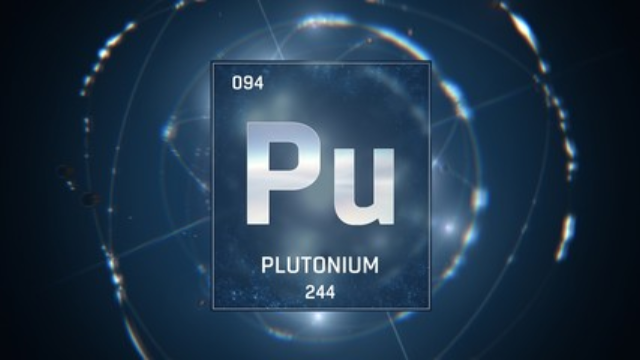You’re about to dive into the intricate world of uranium isotopes. Ever wondered if you can convert Uranium-238 into Uranium-235? We’ll explore the science behind these isotopes, their uses, and the possibility of such a transmutation. You’ll get a grasp on the feasibility and implications of this conversion. So, buckle up for an enlightening journey into the atomic level of our world.
Understanding Uranium-238 and Uranium-235
While you might think all uranium is the same, it’s crucial to understand that Uranium-238 and Uranium-235 are distinct isotopes with unique properties and uses. The Isotope Discovery of these two variants brought about significant advancements in nuclear science. Uranium-238, with 92 protons and 146 neutrons, is the most common isotope, making up 99.3% of all natural uranium. It’s primarily used as a source of concentrated energy in nuclear reactors and in the production of plutonium-239, a fissile material for nuclear weapons.
On the other hand, Uranium-235, also with 92 protons but with fewer neutrons (only 143), is less abundant, constituting a mere 0.7% of all natural uranium. However, it’s the only naturally occurring isotope capable of sustaining a nuclear fission chain reaction, making it highly valuable for energy production and atomic weapons.
Safety Measures are paramount when handling these isotopes. Their radioactive nature demands strict protocols, including adequate shielding to protect from radiation, secure storage to prevent unauthorized access, and careful transport to mitigate the risk of environmental contamination. So, while they might seem similar, these two uranium isotopes are distinct in their discovery, uses, and safety requirements.
The Significance of Uranium Isotopes
In light of their unique properties, you can’t underestimate the significance of Uranium-238 and Uranium-235 in the field of nuclear science. They’re not only crucial in nuclear power production but also in various Isotope Applications and Uranium Mining.
Here’s a quick comparison to shed more light:
| Isotope | Primary Use | Secondary Use |
|---|---|---|
| Uranium-238 | Plutonium Production | Radiation Shielding |
| Uranium-235 | Nuclear Reactor Fuel | Nuclear Weapons |
Uranium-238, the more abundant isotope, undergoes a series of nuclear reactions to produce Plutonium-239, which is used in nuclear weapons and reactor fuel. Additionally, its high density makes it ideal for radiation shielding.
On the other hand, Uranium-235, though less common, is fissionable by thermal (slow) neutrons, making it the primary fuel for nuclear reactors. It’s also used in the manufacture of nuclear weapons.
In Uranium Mining, both isotopes are extracted from the earth, processed, and separated. The concentration of Uranium-235 is then increased in a process called enrichment to make it suitable for nuclear reactors.
How Uranium-238 Is Used
Moving on from the comparison of Uranium isotopes, let’s delve into the applications of Uranium-238, which, despite its non-fissionable nature, plays a significant role in our nuclear industry. This isotope is prevalent in Uranium Mining and is a key component in the production of nuclear fuel.
You’ll find Uranium-238’s uses span far beyond being a mere byproduct of Uranium Mining. Here’s a rundown of its main applications:
- Nuclear Fuel Production: Uranium-238 is transmuted into Plutonium-239, a fissile material used in nuclear reactors.
- Radiometric Dating: It’s used for dating rocks, fossils, and archaeological specimens due to its half-life of 4.5 billion years.
- Radioactive Decay Source: It’s a source of heat in radioisotope thermoelectric generators, used in spacecraft.
- Nuclear Waste Management: Uranium-238 helps in the disposal of reprocessed nuclear waste.
Nuclear Waste management, specifically, is a critical aspect of Uranium-238’s applications. The isotope’s decay products are used to immobilize long-lived nuclear waste, making it safer for storage and disposal. Thus, while Uranium-238 may not be fissionable like its counterpart Uranium-235, its utility in the nuclear industry is undeniable.
Uranium-235: The Powerhouse Isotope
You’ve seen Uranium-238’s important role, but now let’s turn your attention to Uranium-235, the powerhouse isotope that’s the real game-changer in nuclear energy production. Unlike its larger sibling, Uranium-235 is fissionable, meaning it can be split into two smaller nuclei, releasing an unimaginable amount of energy in the process. This is the isotope applications that nuclear power plants covet the most.
| Uranium-238 | Uranium-235 | |
|---|---|---|
| Natural Abundance | 99.3% | 0.7% |
| Fissionable | No | Yes |
| Used in | Depleted Uranium, Plutonium-239 production | Nuclear reactors, Nuclear weapons |
This table above provides nuclear energy insights and illustrates the significant difference between the two isotopes. The rare nature of Uranium-235, coupled with its fissionable property, makes it a prized isotope in nuclear energy production. Extracting it, however, is a challenging process due to its limited natural abundance.
Process of Uranium Transmutation
Let’s dive into the intriguing process of uranium transmutation, where you’ll see if it’s possible to turn Uranium-238 into Uranium-235. This process, steeped in complex physics and chemistry, involves the manipulation of atomic structures to convert one isotope into another.
Transmutation challenges include maintaining control over such a volatile process, and ensuring isotope stability. Despite these obstacles, scientists have made significant strides in the field of nuclear physics.
To understand this process better, let’s consider the following key points:
- Uranium-238 has three more neutrons than Uranium-235, making it less stable and more prone to decay.
- The transmutation process involves bombarding Uranium-238 with neutrons to trigger a chain reaction that converts it into Uranium-235.
- This process must be controlled carefully to prevent a nuclear meltdown.
- The newly formed Uranium-235 is highly radioactive and must be handled with care.
Transmutation is a fascinating and complex process, but with modern advancements in nuclear technology, it’s slowly becoming a more tangible reality. Although turning Uranium-238 into Uranium-235 presents a host of challenges, it’s an exciting frontier in nuclear research.
Feasibility and Implications of Conversion
In tackling the feasibility and implications of converting Uranium-238 into Uranium-235, you’ll encounter a wide array of technical and safety considerations. The process involves isotope manipulation, a sphere of nuclear science that’s both complex and risky.
From a technical perspective, transforming one isotope into another requires significant energy input. You’re essentially changing the number of neutrons in the atom’s nucleus, a process that’s far from simple. It involves bombarding the Uranium-238 with neutrons, altering the unstable isotope into Plutonium-239, which eventually decays into Uranium-235.
However, the real challenge lies in the safety aspects. Isotope manipulation at this level calls for stringent nuclear safety protocols. The process produces highly radioactive materials, posing considerable risk to human health and the environment. Plus, Uranium-235 is a fissile material, meaning it can sustain a nuclear chain reaction. This property makes it desirable for nuclear power generation but also poses a significant risk for nuclear proliferation if fallen into the wrong hands.





